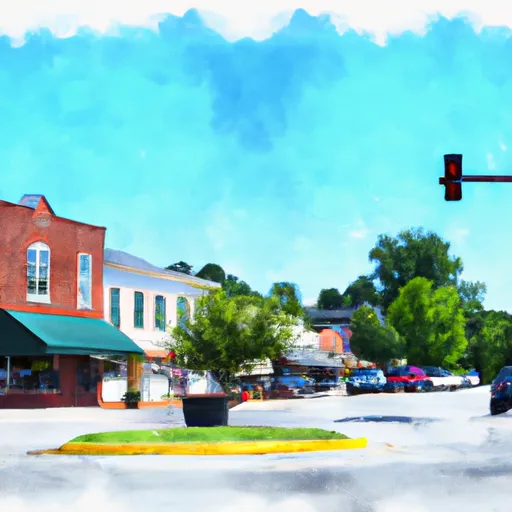-
 Snoflo Premium
Snoflo Premium
Get unlimited access to all our content
With no Ad interruptions! - Start Your Free Trial Login with existing account
Maddox
Eden Index
Climate
9.8
•
Recreation
6.0
•
Community
1.6
•
Safeguard
6.4/10

Maddox, Maryland is a small, picturesque town located in St. Mary's County. Situated on the banks of the Potomac River, the region experiences a humid subtropical climate. Summers are hot and humid, with average temperatures ranging from the mid-70s to the low 90s Fahrenheit, while winters are mild, with temperatures typically ranging from the upper 20s to the mid-40s Fahrenheit.
The area is blessed with abundant water resources, with the Potomac River being the main hydrological feature. There are also numerous creeks and marshes, contributing to a diverse aquatic ecosystem. These water bodies provide opportunities for activities such as boating, fishing, and kayaking, allowing visitors and locals alike to explore the natural beauty of the area.
In addition to water-based recreation, Maddox offers various outdoor activities. The town is surrounded by lush forests, providing opportunities for hiking, camping, and birdwatching. Nature enthusiasts can explore the nearby state parks and wildlife refuges, offering a chance to spot wildlife and immerse themselves in the tranquility of nature.
Overall, Maddox, Maryland offers a pleasant climate, rich hydrological features, and a range of outdoor recreation opportunities for nature lovers and adventure seekers. With its beautiful scenery, it is an ideal destination for those seeking an escape into nature.
What is the Eden Index?
The Snoflo Eden Index serves as a comprehensive rating system for regions, evaluating their desirability through a holistic assessment of climate health, outdoor recreation opportunities, and natural disaster risk, acknowledging the profound impact of these factors on livability and well-being.
Climate Health Indicator (CHI): 9.8
Maddox receives approximately
1149mm of rain per year,
with humidity levels near 76%
and air temperatures averaging around
14°C.
Maddox has a plant hardyness factor of
7, meaning
plants and agriculture in this region tend to thrive during the non-winter months.
By considering the ideal temperature range, reliable water supplies, clean air, and stable seasonal rain or snowpacks, the Climate Health Indicator (CHI) underscores the significance of a healthy climate as the foundation for quality living.
A healthy climate is paramount for ensuring a high quality of life and livability in a region, fostering both physical well-being and environmental harmony. This can be characterized by ideal temperatures, reliable access to water supplies, clean air, and consistent seasonal rain or snowpacks.
Weather Forecast
Streamflow Conditions
Potomac
Area Rivers
Potomac
Snowpack Depths
Potomac
Reservoir Storage Capacity
Potomac
Groundwater Levels
Recreational Opportunity Index (ROI): 6.0
The Recreational Opportunity Index (ROI) recognizes the value of outdoor recreational options, such as parks, hiking trails, camping sites, and fishing spots, while acknowledging that climate plays a pivotal role in ensuring the comfort and consistency of these experiences.
Access to outdoor recreational opportunities, encompassing activities such as parks, hiking, camping, and fishing, is crucial for overall well-being, and the climate plays a pivotal role in enabling and enhancing these experiences, ensuring that individuals can engage in nature-based activities comfortably and consistently.
Camping Areas
| Campground | Campsites | Reservations | Toilets | Showers | Elevation |
|---|---|---|---|---|---|
| Louise F. Cosca Regional Park | 23 | 223 ft | |||
| Andrews AFB Military | None | 269 ft | |||
| Greenbelt Park | 175 | 121 ft | |||
| Cedarville State Forest | 27 | 198 ft |
Nearby Ski Areas
Catastrophe Safeguard Index (CSI):
The Catastrophe Safeguard Index (CSI) recognizes that natural disaster risk, encompassing floods, fires, hurricanes, and tornadoes, can drastically affect safety and the overall appeal of an area.
The level of natural disaster risk in a region significantly affects safety and the overall livability, with climate change amplifying these risks by potentially increasing the frequency and intensity of events like floods, fires, hurricanes, and tornadoes, thereby posing substantial challenges to community resilience and well-being.
Community Resilience Indicator (CRI): 1.6
The Community Resilience Indicator (CRI) recognizes that education, healthcare, and socioeconomics are crucial to the well-being of a region. The CRI acknowledges the profound impact of these elements on residents' overall quality of life. By evaluating educational resources, healthcare accessibility, and economic inclusivity, the index captures the essential aspects that contribute to a thriving community, fostering resident satisfaction, equity, and social cohesion.

